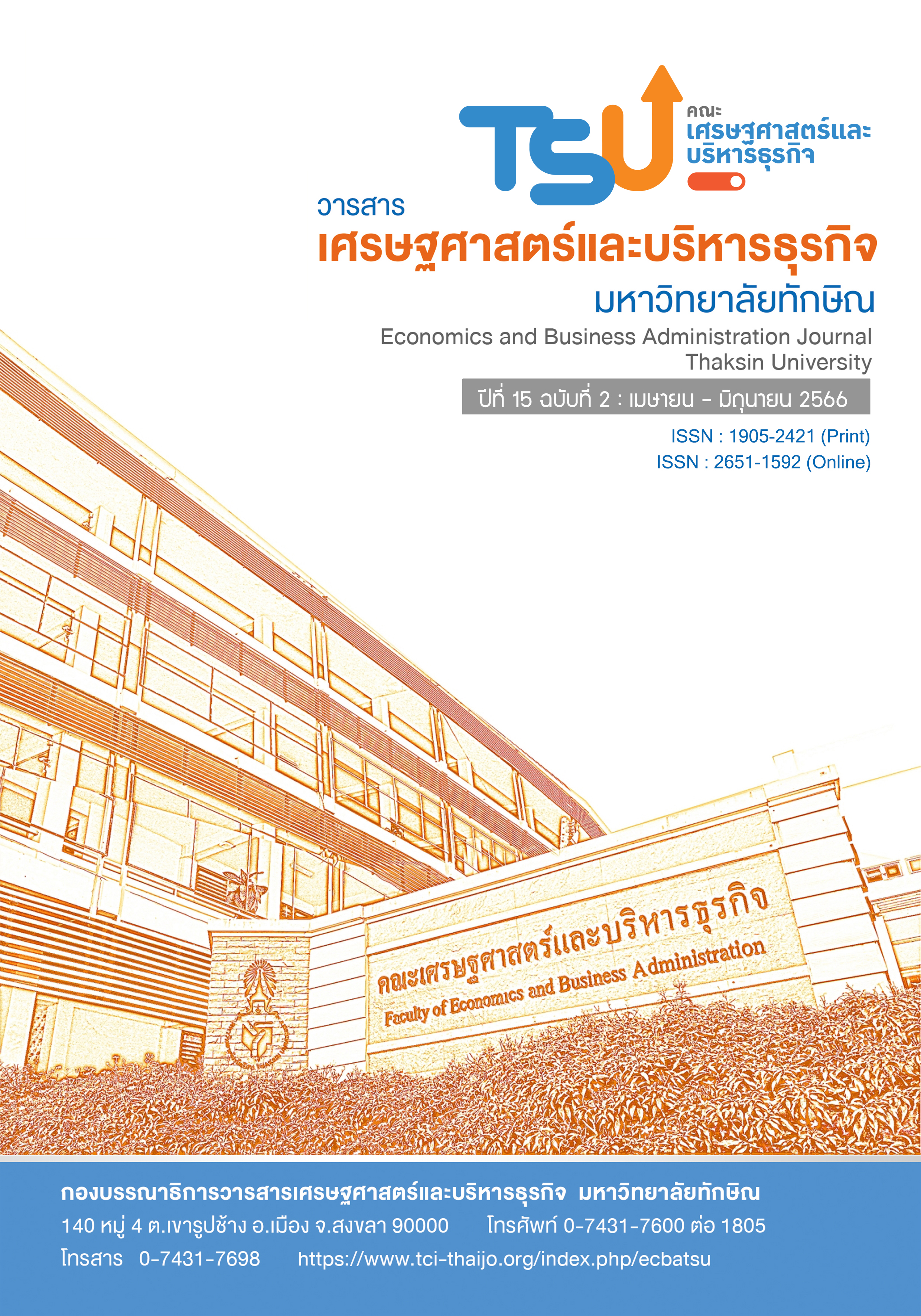Creating Added Value for the Identity of Dala Batik Fabric Linkages in Community-based Tourism in Satun Province
DOI:
https://doi.org/10.55164/ecbajournal.v15i2.259192Keywords:
Identity, Batik fabric, Community-based tourismAbstract
The objectives of this study were 1) to find the local identity of Khuan Don district, Satun province 2) to create a batik pattern printed according to the local identity of Khuan Don district in Satun province which is an enterprise of muslim apparel products under the brand "Dala Patek" 3) to upgrade batik fabrics with local unique prints and increase economic value. The target groups are muslim clothing community enterprises under the brand "Dala Patek". The data collection employed the method of field visits and in-depth consultation in order to find a spatial identity used to create a batik pattern, product design, and make product prototypes.
The results of the study were as follows. Firstly, the local identity of Khuan Don district, Satun province, is Dok Thian Nam (spatial identity), and common identity in the area is buffalo kite and Geopark. Secondly, a batik pattern printed according to the local identity of Khuan Don district in Satun province which belongs to an enterprise of Muslim apparel products under the brand "Dala Patek", the identity of buffalo kites, Geopark and Tien Nam flowers were assigned to reproduce patterns and make batik fabric that combines the spatial and cultural identity of the province under the name "Bungalera Yang." The development process started by presenting a fabric pattern and using it to develop outstanding products of the community visualizing in a 3D prototype (Sketch Design). There is an idea to design a tie-dyed fabric pattern from Champada that has a unique pattern of the group and has made a wooden block with batik printing for the group of enterprises. Finally, to upgrade printed batik fabrics that are unique to the local area, the prototype of the fabric pattern was developed to create new products such as the development of shawls designed under the theme: “Fah Rimlay: Satun.” The principle of product design involved many concerns such as a unisex Item, easily blended with other sets (mixed and match), free size, and the use of natural colors tone. This development has resulted in an increase in economic value, which can be used as community products for tourism causing the income of the community enterprise group to increase by 20 percent.
References
Basic information of Khuan Don District Satun Province, Satun Provincial Office. (2018). Retrieved from https://www.satun.go.th/amphur_content
Chudhavipata, W. (2012). Texttile: Reflextion of Thai Traditions. (Research project). Dhurakij Pundit University, Bangkok.
Community Development Department and Community Enterprise. (2021). General Information of the One Tambon One Product Project. Retrieved from https://cep.cdd.go.th https://cep.cdd.go.th
Community Development Department Ministry of Interior.Community Development Department. (2017). Concepts and Principles of One Tambon One Product. Retrieved from https://cep.cdd.go.th/otop-data.
Department of Industry Promotion. (2016). Creating Identity from Cultural Capital. Retrieved from https://bsc.dip.go.th/th/category/marketing2/sm-buildingegosteals1
Department of Industry. (2016). Sales and Marketing. How to Create an Identity to be Popular. Retrieved from https://bsc.dip.go.th/th/category/marketing2/sm-buildingegosteals1
Kittikorn, S., Rachawadee, S., & Sabaithip, I. (2011). Development of Tourism Routes for Participating Learning in Du Tai Sub-district Communities Mueang Nan District, Nan Province. (Research report. Nan Community College)
Office of the National Economic and Social Development Council Office of the Prime Minister. (2017). The 12th National Economic and Social Development Plan 2017-2021. Retrieved from https://clib.psu.ac.th/images/ratana/APA-6-edition.pdf
Pattamawadee, W. (2017). A Study of Community Product Identity on the Basis of Sawayjeek Community Culture. Muang District, Buriram Province. Interdisciplinary Management Journal, Buriram Rajabhat University, 1(2), 21-29.
Phukpoo, W. (2020). Community products for tourism. Retrieved from www.randdcreation.com/content/4738/ Community Product Development - for Tourism.
Somchai, S. (2017). The Study of an Additional Value a Community Based Tourism, the Case Study of Ban Chiang, Udon thani. Economy, National Defense College. National Defense Studies Institute. Retrieved from http://www.dsdw2016.dsdw.go.th/doc_pr/ndc_2560-2561/8541e.html
Thiraprapa, P. (2019). Souvenir Identity and Graphic Design Reflects the Local Area. Retrieved from https://www.fengshuimee.com/bundanthai-thaidesign
Thongprasert, N., Chotwanich, P., & Kasemsuk, S. (2019). Product Development to Premium OTOP by Using Cultural Capital and Local Wisdom: A Case Study of Natural Dyne Silk of Hua Muang Weaving women group, Mahachanachai, Yasothon. Journal of Graduate School, Pitchayatat, 15(1), 95-108.
Downloads
Published
How to Cite
Issue
Section
License
Copyright (c) 2023 Economics and Business Administration Journal Thaksin University

This work is licensed under a Creative Commons Attribution-NonCommercial-NoDerivatives 4.0 International License.




